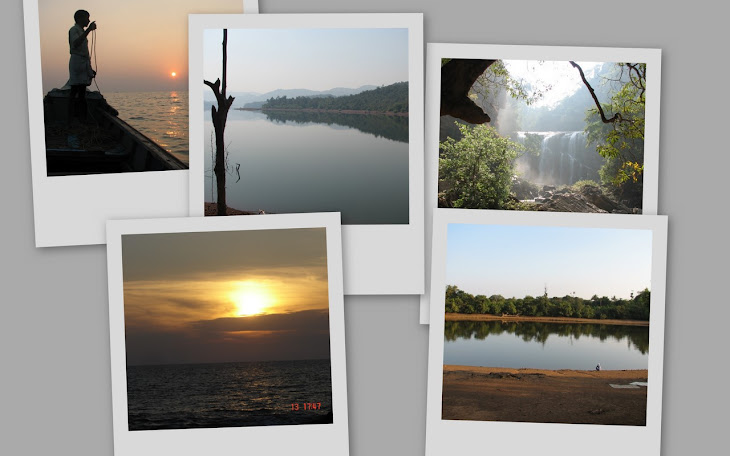Distance: 2km from Kumta Bus stand
Speciality: Sun Set view, Light trekking, Rocks around the beach
How to reach: Catch an auto from Kumta bus stand and ask the way to "Head Bander" beach.
Speciality: Sun Set view, Light trekking, Rocks around the beach
How to reach: Catch an auto from Kumta bus stand and ask the way to "Head Bander" beach.


I would say this is one of the unexplored place in Uttara Kannada. I have been living near to beach from almost 26 years from now. Every time I visit this beach, it gives me fresh idea and fresh life. Beach is around 2km from the Kumta bus stand. You get an auto to reach there. Preferred time is in the evening but you can go in early morning as well.
Just before reaching the beach, there is small bridge and you can see small boats on your left side. Just after the bridge you will see a small church on left. Few steps from here,beach stretch starts. On the left side it is beach and on right hand side it is fields where local people cultivate Onion during the summer season.Beach stretch is around half a KM. At the end of the Beach, you can climb up little bit to reach the top. You can take the bike/Auto till the top or you can walk as well.
Just before reaching the beach, there is small bridge and you can see small boats on your left side. Just after the bridge you will see a small church on left. Few steps from here,beach stretch starts. On the left side it is beach and on right hand side it is fields where local people cultivate Onion during the summer season.Beach stretch is around half a KM. At the end of the Beach, you can climb up little bit to reach the top. You can take the bike/Auto till the top or you can walk as well.
You can stop at the start of the beach and can have a lovely walk along the beach. You can swim and have beach bath as well. Beach is not very deep and hence NOT to worry much while having beach bath. If you are interested in beach games, you can carry Frisbee, Foot ball, Valley ball and cricket kit. There is enough space to form your group and play. When you walk along the the beach, on the west side you see the rocks. You can climb up all the way and reach the top of the rock. There is two rocks which are leaning to each other. When I asked about this way back in 1993, I got the answer that it is symbol of Boy and girl loving each other. You can see the Sun set view from here.
On the other end of the beach where the road ends, you can actually climb up again. Near to this there is a Government prawn factory. This is NOT functional now. When you climb up, you will see the old French monument. This was constructed by the French people before the Independence. During British time, Kumta beach was one of the important port where goods used to be exported. We can still see some traces of the Steps made by the British. This is a Top view where you can see entire beach view along with the fields around. Way back, there was a WELL in that area but it is now completely filled with the mud and it is NOT traceable any more now. This particular location is so AMAZING. You have to visit this place and spend at least 30 minutes. Relax your self, see the beach and the surrounding place. You will be in entire different world all together. Nice breeze, Sun playing with the sky. Sun set is so nice. See the photos.

Kumta beach is an inspiration for me all the time. Especially when I was studying my 2nd year PUC, I used to spend my free time lonely in the beach. Every time I visited this, I was energized more and more to study and experiment.
Whenever you visit this place, please make a note of taking some food and snacks along with your. There are NO shops available in the beach. This is because local people visit only during weekend and most of the people prefer NOT to buy eatables here. Some time you will get the ICE creams.
All together,this is place to spend the evening along with the family. Whenever you are in Kumta, make sure you spend one evening in the KUMTA BEACH.

